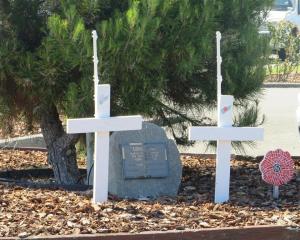
Why Waste Waimate was formed late last year, after South Island Resource Recovery Limited (SIRRL) — a joint venture between New Zealand’s Renew Energy Ltd, China Tianying Incorporated and Spanish company Urbaser — announced it had identified three possible areas in the Waimate district for a waste-to-energy plant that could convert 350,000 tonnes of waste into renewable energy each year.
Why Waste Waimate now has about 60 members and recently launched a petition against the proposal, after SIRRL confirmed it had bought 15ha of land from Murphy Farms Ltd on the corner of Carrolls and Morven-Glenavy Rds, just north of Glenavy, for the plant, dubbed "Project Kea". The final sale is subject to SIRRL being granted a resource consent to build the plant, and Overseas Investment Office approval.
Why Waste Waimate chairman John Guthrie said the group’s main concern was a lack of information from SIRRL.
"SIRRL has yet to provide any concrete information beyond pretty pictures and forecasts of job growth," Mr Guthrie said.
The Waimate district’s "core strengths" were in food production, with a rising potential for tourism — and "there’s no place for a plastic-burning incinerator in that mix".
"I don’t see any benefits at all to our community from being the waste incineration capital of the South Island — quite the opposite in fact."
Why Waste Waimate will hold its first annual meeting today at 2pm at the Waimate Silver Band Hall. Mr Guthrie encouraged everyone in the Waimate, Glenavy and Oamaru areas to attend.
The group wanted more information about technology to be used at the plant and was concerned about the possible use of coal to fuel the incinerator, he said.
When asked how the incinerator would be fuelled, SIRRL director Paul Taylor said "the facility is connected to the local electricity network".
"This allows electricity to be provided to the facility in order for it to start-up," Mr Taylor said in an emailed statement.
"Then, once started, the plant is self-powered and the power it produces is exported into the local network. After this, any excess power goes into the national grid."
Mr Taylor said SIRRL had engaged a "range of experts" to prepare a human health assessment and reports on air quality, greenhouse gas emissions, traffic, noise, landscape and visual impact, stormwater and domestic wastewater discharge.
SIRRL wanted to make sure the Waimate community had the opportunity to have their say, and once the consent application for the plant was lodged later this year, would hold information meetings in Waimate.












